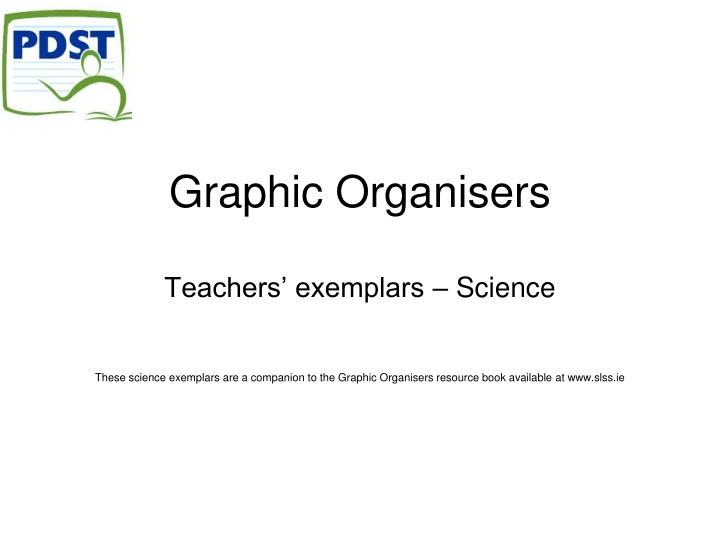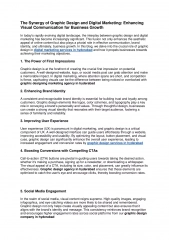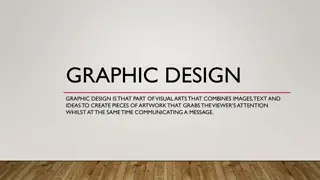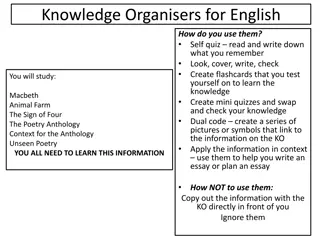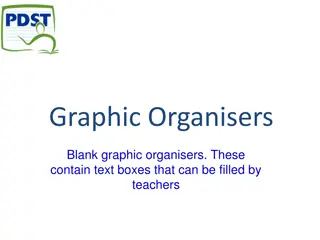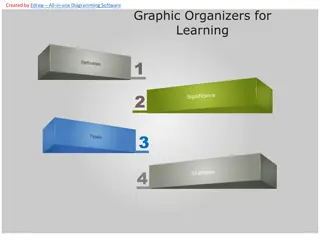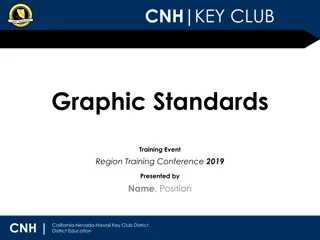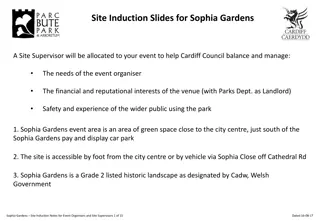Science Exemplars: A Companion to Graphic Organisers Resource Book
Explore science exemplars covering topics such as water treatment, plant reproduction, titration, digestion stages, organism organisation, scientific method, alimentary canal, microscopic study of plant cells, chemistry concepts, growing bacteria, and oxygen gas production. These exemplars provide practical guidance and insights to enhance science education and understanding.
Download Presentation

Please find below an Image/Link to download the presentation.
The content on the website is provided AS IS for your information and personal use only. It may not be sold, licensed, or shared on other websites without obtaining consent from the author.If you encounter any issues during the download, it is possible that the publisher has removed the file from their server.
You are allowed to download the files provided on this website for personal or commercial use, subject to the condition that they are used lawfully. All files are the property of their respective owners.
The content on the website is provided AS IS for your information and personal use only. It may not be sold, licensed, or shared on other websites without obtaining consent from the author.
E N D
Presentation Transcript
Graphic Organisers Teachers exemplars Science These science exemplars are a companion to the Graphic Organisers resource book available at www.slss.ie
Water treatment clean water FLOURIDATION CHLORINATION FILTERING SETTLING SCREENING dirty water
Plant reproduction germination dormancy dispersal Seed & fruit formation fertilisation pollination
Titration preparing burette remove funnel check at eye level using white sheet of paper bring meniscus to line using a dropper fill tap at bottom of burette re-fill with solution using funnel rinse with solution to be used rinse through funnel with deionised water clamp burette vertically with funnel in place
Stages in digestion egestion assimilation absorption digestion ingestion
Organisation levels organism systems organs tissues cells molecules
Scientific method present analyse carry out devise experiment health & safety observe problem Science
Alimentary Canal oesophagus mouth stomach caecum ileum duodenum colon rectum anus Biology food passing through the digestive system
Microscopic study of plant cells what to do, and why Science, Biology
Chemistry Quark model radiation alpha and beta sub-atomic particles in nucleus atom alchemy
Growing bacteria on agar plates Incubate Invert Replace lid, seal, label Streak plate Lift lid slightly Source of bacteria
Making Oxygen Gas To do test To release O2 To collect gas To make O2 Use H2O2 and MnO2 Source of O2 Catalyst
Photosynthesis sunlight carbon dioxide water photosynthesis
Rates of reaction particle size nature of reactants temperature catatyst Rate of reaction
L.C. Physics magnetic field force
Preparation of oxygen gas H2O2 hydrogen peroxide MnO2 manganese dioxide beehive shelf trough of water collecting jars tap funnel tubing oxygen gas
7 characteristics of living things movement feedingreproduction sensitivity respiration growth life
Excretion in the Kidney salts water UREA hormones H2 urine
7 characteristics of living things reproduction movement nutrition all these activities create toxic waste which must be released If it has all these its alive!! excretion growth respiration response
Organic chemistry carboxylic acids O alkanes C-C -ane methane heating fuel aldehydes =O -anal ethanol + H2SO4 alkynes C C -yne H2O + CaC2 cutting, welding C OH -anoic acid ethanoic acid vinegar perfumes, fruit organic organic compounds compounds flavourings solvents plastics aluminium oxide and alcohol making soap beers, spirits propan-2-ol + -anoate -anone ethanol Al2O3 + C2H5OH C C-C-C -anol -ene O = O C=C -OH R esters ketones alcohols alkenes
Systems & organs of the human excretory digestive some human body systems respiratory circulatory
Human Nutrition carbohydrate fats proteins CHO oils, butter energy storage brown paper test CHON eggs, meat growth & repair CHO bread, pasta energy NaOH & CuSO4 amino acids glucose = Benedict s test starch = iodine test deficiency = lack of energy molecules = 3 fatty acids:1 glycerol Food & nutrition def = stunted growth water deficiency = constipation deficiency = scurvy deficiency = anaemia aids peristalsis connective tissue in citrus fruits haemoglobin bran, fruit red meat cellulose eg VIT C eg Fe fibre vitamins minerals
Atomic Structure Sub-atomic particles Periodic table B hr Diagram atomic no. mass no. shells Electronic configuration neutron electron group atoms BAT STAIRCASE proton valency structure Nuclear formula Atomic Structure charges molecules empty space ions valency shells Neutron = neutral covalent nucleus Electron = negative ionic Proton = positive Bonding Location Charges
Ecology key terms environmental factors animals plants temperature qualitative quantitative: light % cover % frequency wind pie charts bar charts Ecology Field work results quadrat thermometer light meter anemometer pooter pitfall trap line transect beating tray tools tools tools
Radioactivity... nuclear reactor uses type medical imaging fuel moderator fuel rods alpha medical therapy beta gamma carbon dating food irradiation heat exchanger radioactivity burns clothing shielding use tongs leukaemia genetic defects cataracts death don t eat or drink don t smoke precautions hazards
What we look for on the microscope light clips fine lens stage objective nosepiece focus wheel coarse light microscope
What we need to remember about light sun, star light mirror fine lens eye reflection microscope transparent refraction eclipse 7 colours periscope light
Human Hormones oestrogen LH oxytocin FSH adrenaline thyroxine progesterone insulin growth hormone prolactin endocrine system
What we need to remember about light sun, star light mirror fine lens eye reflection microscope transparent refraction eclipse 7 colours periscope light
Separation techniques Criteria Topic Apparatus Sample Draw the diagram State result What ? substances Insoluble solid from liquid Funnel, filter paper, beaker, flask Sand from water Filtration Soluble solid from liquid Bunsen , tripod, gauze, beaker, evaporating dish Salt from water Evaporation Distillation Soluble solid from liquid; two liquids of different BP Condenser, bunsen, clamps, flask, beaker, stand Dye from wine, coke Dyes with different solubilities from liquid Chromato- graphy paper, jar, ink, dropper, pencil Dyes from black marker Chromatography
Cross Classification blood cells criteria cells source function no/mm3 shape name red white platelet
Cross Classification blood vessels criteria vessels function pressure wall valves lumen artery vein capillary
Cell structures animal & plant cell membrane cytoplasm nucleus nuclear membrane nuclear pores nucleolus DNA mitochondrion ribosomes chloroplast cell wall vacuole centriole ANIMAL CELL PLANT CELL
Comparing forms of energy Dangerous waste No waste Cheap Renewable Large supply WIND NUCLEAR
Bonding Shared Given & taken No charged particles Electrons involved Charged particles = ions Centre of periodic table Holds particles together LHS&RHS of periodic table Molecules Liquids & gases COVALENT IONIC Crystals, solids
gases: oxygen v. carbon dioxide use H2O2 + MnO2 to make use HCl + CaCO3 to make relights a glowing splint turns limewater milky transparent needed by all living things for respiration needed by plants for photosynthesis found in air released by plants in photosynthesis released by all living things in respiration CARBON DIOXIDE GAS OXYGEN GAS
Endocrine system: male v. female adrenals adrenaline pituitary hormones: growth, lutenising, antidiuretic, follicle stimulating ovaries oestrogen progesterone testes testosterone thyroid thyroxine pituitary oxytocin parathyroids parathormone pancreas insulin MALE FEMALE
RNA v. DNA single strand found in nucleus double strand ribose deoxyribose uracil adenine cytosine guanine thymine found in cytoplasm and in ribsosome does not leave nucleus DNA RNA
mitosis v. meiosis reduction division 2 daughter cells cell division two cycles of division single cycle of division require energy 4 daughter cells identical daughter cells non-identical daughter cells MEIOSIS MITOSIS
Photosynthesis v. Respiration only in plant cells part of the cycles of nature chloroplast all living things take place in cells CO2 in, O2 out mitochondrion takes place in stages O2 in CO2 out makes glucose breaks down glucose RESPIRATION PHOTOSYNTHESIS
Control systems: nervous v. endocrine response usually slower rapid response longer-lasting response short lived response react to internal and external stimuli chemical messengers in blood electrical impulse via neurons messages sent from one part of body to another localised, separate glands CNS + PNS connected co-ordination male & female same NERVOUS SYSTEM male and females differ ENDOCRINE SYSTEM
renewable v. non-renewable energy forever both need to be managed carefully will run out wind sun wave bio-fuels fossil fuels oil, coal, peat, gas both cost money to deliver NON- RENEWABLE RENEWABLE
1st year science pre-learning electricity electronics Chemistry atoms gases air fuels Physics food light plants animals Biology
Sub-atomic particles Positively charged, In the nucleus, similar mass, the sum of these is the mass no. Not charged, Determines atomic no. No. can vary (isoptope) Neutron All in the atom Number is constant Proton Charged Negatively charged, Almost no mass!! Can be removed or added, In constant motion in orbits Electron
Comparing organs of excretion [other function: breathing] water as vapour [other functions: protective, sensory, heat regulation] carbon dioxide skin excess water 2 1 lungs salts diffusion urea water as liquid [other functions: osmoregulation] active transport kidney
Separation techniques Equipment Equipment evaporation sex-linked disease What happens What happens What happens What happens distillation chromatography Equipment Equipment
Le Chateliers Principle N2+ 3 H2 2 NH3 H = 92kJ mol-1 decrease increase pressure temp increase addn decrease addn catalyst ? removal removal
Trends in the Periodic Table Groups increase going down groups adding new shell screening effect Groups increase going down adding new shell increased screening effect Periods decreases along periods no new shell larger nucleus, stronger hold Periods decrease along periods no new shell larger nucleus, stronger hold Groups Decreases down groups adding new shell i.e. further away increases screening effect energy values atomic radius Groups increase down Group 1 1 e- on outer shell, getting further from nucleus ionisation energy reactivity Groups Periods Decreasing atomic radius no screening effect no new shell, larger nucleus Increases along periods increase going up Group 1, only need 1 e- atomic radius decreases, nucleus has stronger hold
mass no. & relative atomic no. atomic structure elements, atoms, symbols periodic table groups & periods metals v. non-metals Junior Cycle Science
what is it? uses properties Light experiments laws Junior Cycle Science:
